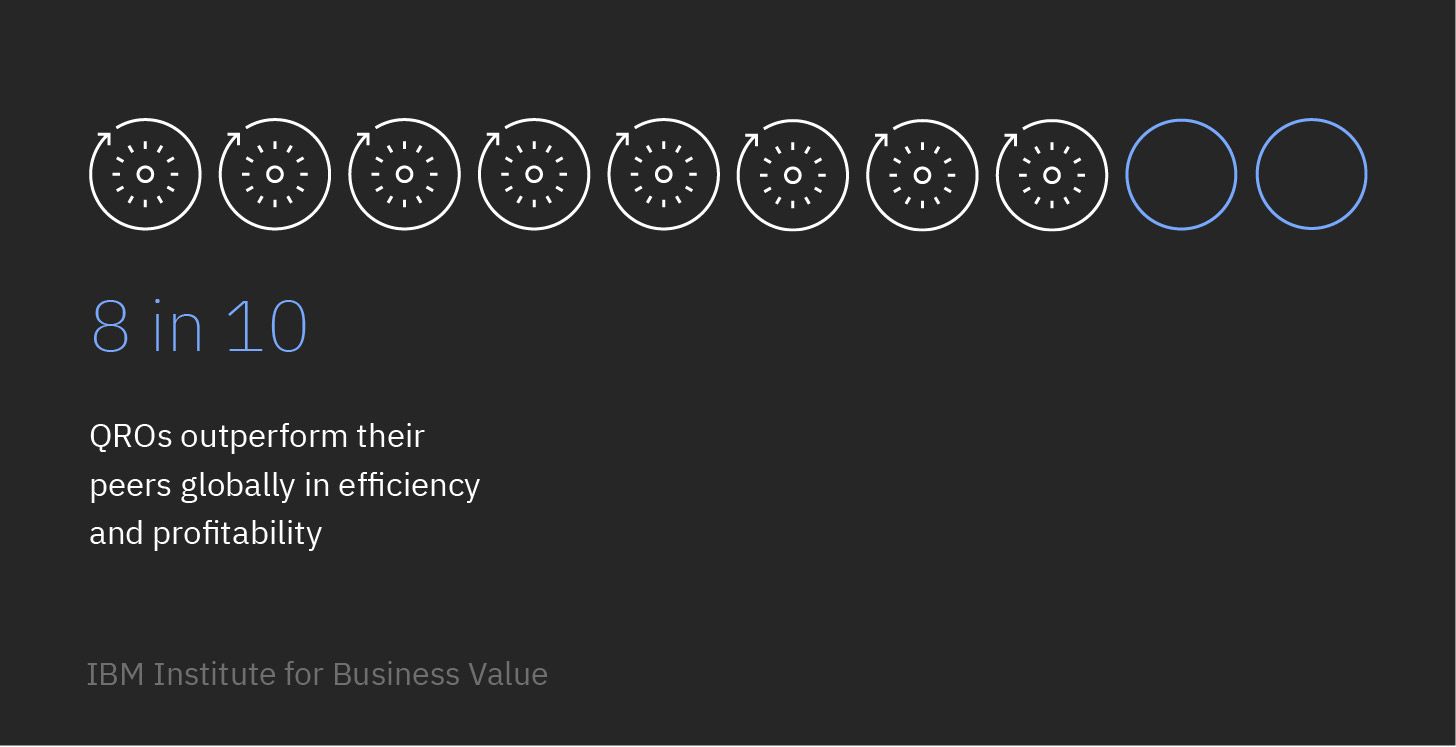Quantum computing is coming of age, recently showing evidence of utility—a point at which quantum systems could serve as computational tools to tackle problems that classical systems may never be able to solve—and astute organizations are getting ready. Leaders who fail to understand and adapt could find themselves far behind their competitors.
By leveraging quantum mechanics, quantum systems can explore problems that have long perplexed classical computers. Many organizations are driven by this potential and are pursuing partnership and investment strategies accordingly.
In 2023, organizations invested 7% of their R&D budget in quantum computing, up 29% from 2021. By 2025, this is expected to further increase by another 25%. Additional research shows the global quantum computing market valued at $866 million in 2023—and it’s anticipated to reach $4.375 billion by 2028, a compound annual growth rate (CAGR) of 38.3%.
And here’s another call to action: early adopters are poised to reap the rewards.
Analysts estimate that by 2035, quantum computing technology could potentially create $450 billion to $850 billion in net income for end users via cost savings and revenue generation. The catch, and a critical note at this stage of the game: in most industries, as much as 90% of that value could go to early adopters.
This dynamic quantum computing landscape was the catalyst for our research inquiry: just how ready are organizations today to utilize quantum computing in tangible, actionable ways?
To learn more, the IBM Institute for Business Value (IBM IBV) has developed a Quantum Readiness Index (QRI). (See Perspective below.) This index leverages proprietary, self-reported data from an in-depth survey of C-suite executives representing 565 organizations with annual revenue of $250 million or more. The QRI indicates:
- Where organizations fall along the readiness spectrum
- What characteristics define a quantum-ready organization (QRO) today
- What targeted actions can propel organizations along their quantum journey.
Among the organizations we surveyed, we designated those with the highest QRI scores (the top 10%) as quantum-ready organizations. These organizations, although diverse across countries and industries, share many similarities.
What sets quantum-ready organizations apart
In their own right, these are high-performing organizations in their industries: eight in ten QROs outperform their peers in efficiency and profitability (see figure). And even though quantum investments are yet to yield a positive ROI, QROs anticipate being nearly five times closer to generating value on these investments than their peers. More than half of that investment (55%) is directed toward research and experimentation (24%), ecosystem participation garners 16%, and workflow redesign nets 15%.
QROs: A prevalence of outperforming

Our research also reflects the impact of preparedness. Today, a quantum-ready organization is 3.5 times more motivated to accelerate innovation and 2.5 times more driven by obtaining new patents than by an immediate focus on solving an intractable business problem with current quantum computing technology. It’s speculation but certainly logical that accelerated innovation and patents could lead to solving intractable business problems in the future. This optimism is why, over the next 10 years, our respondents overall expect the impact of quantum readiness on ROI to increase by over 300%. In other words, these organizations recognize the time to value of quantum computing.
The paper explores three differentiating attributes of quantum-ready organizations. They tend to be:
- Ecosystem enthusiasts. 60% of QROs actively engage in quantum ecosystems for use cases, educational programs, or hardware access. In an inadvertent nod to the importance of ecosystems, 93% of organizations at the lowest level of readiness do not participate in any quantum ecosystem.
- Contagious innovators. QROs tend to be advanced in other innovative technologies as well. In fact, quantum-ready organizations run 48% more AI workloads than their least-ready counterparts.
- Talent nurturers. QROs have a greater understanding of the skills gap—identified as the top barrier to adopting quantum computing—and are nearly three times more effective in their workforce development approaches. These include developing internal quantum skills, attracting STEM talent, and partnering with academic institutions and research labs.
Read the report to learn more about why the time is now for your organization to become quantum ready. Review the practices of quantum-ready organizations and explore our detailed action guide. A quantum future awaits.
Perspective: The Quantum Readiness Index
The Quantum Readiness Index (QRI) is a weighted average index that tracks the global state of quantum readiness. The QRI evaluates indicators across three dimensions of strategy, operations, and technology. Scores for each indicator are weighted based on our experience with clients. Using this data, we computed a 100-point index. The QRI is designed to be used over time to track changes in readiness of an organization, industry, or region.
Today, an organization’s quantum computing readiness score is most influenced by its operating model: if an organization invests in a team and a process to govern their quantum innovation, they are better positioned than peers that focus just on the technology without corresponding investment in their talent and innovation process.
Yet overall, the Quantum Readiness Index shows low levels of readiness across all industries and regions: 22 on the 100-point index.
As quantum computing rapidly approaches utility, we expect strategy and technology capabilities to play a greater role in an organization’s readiness.
The QRI
Comprehensive metrics spanning operations, technology, and strategy





